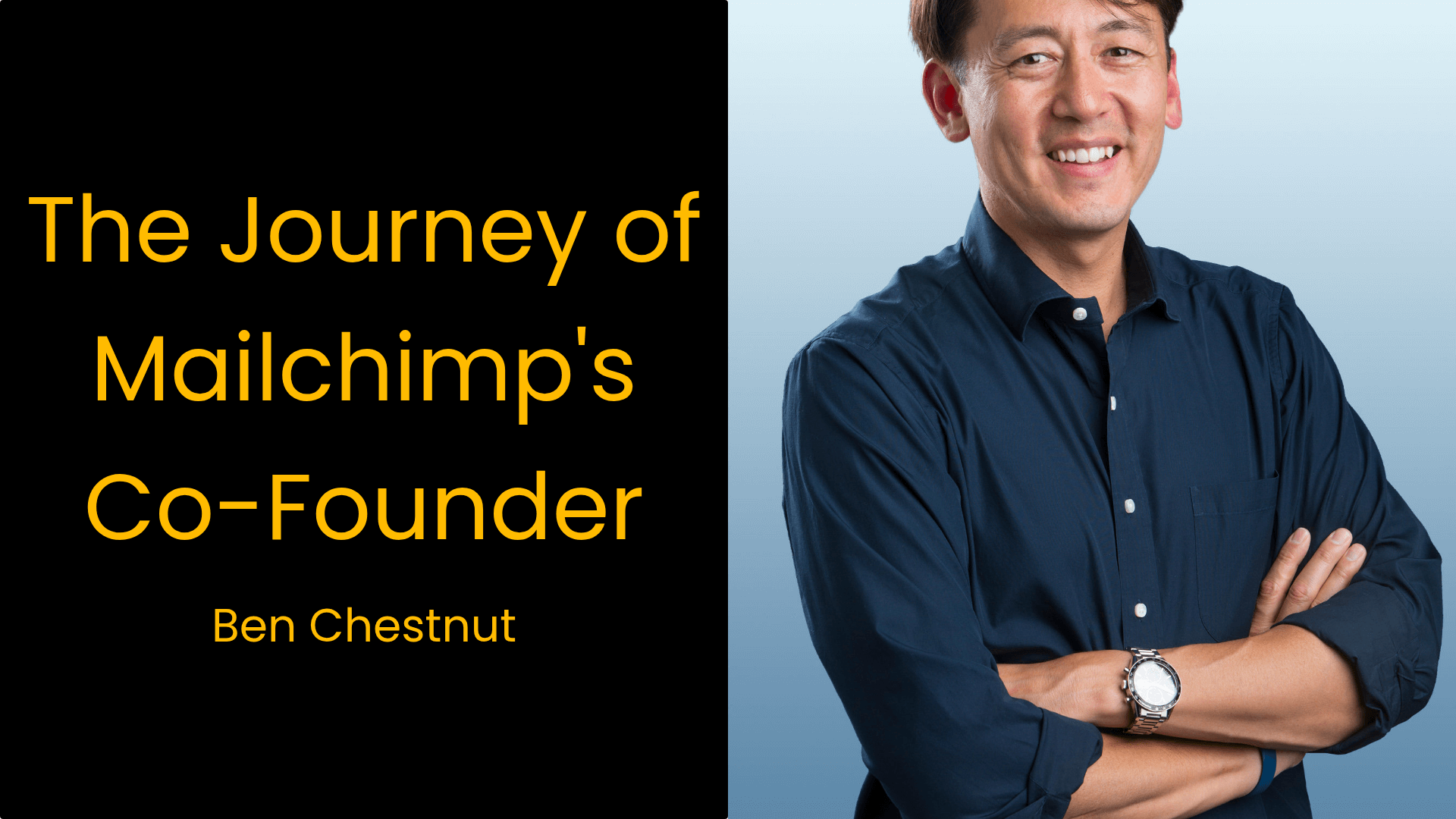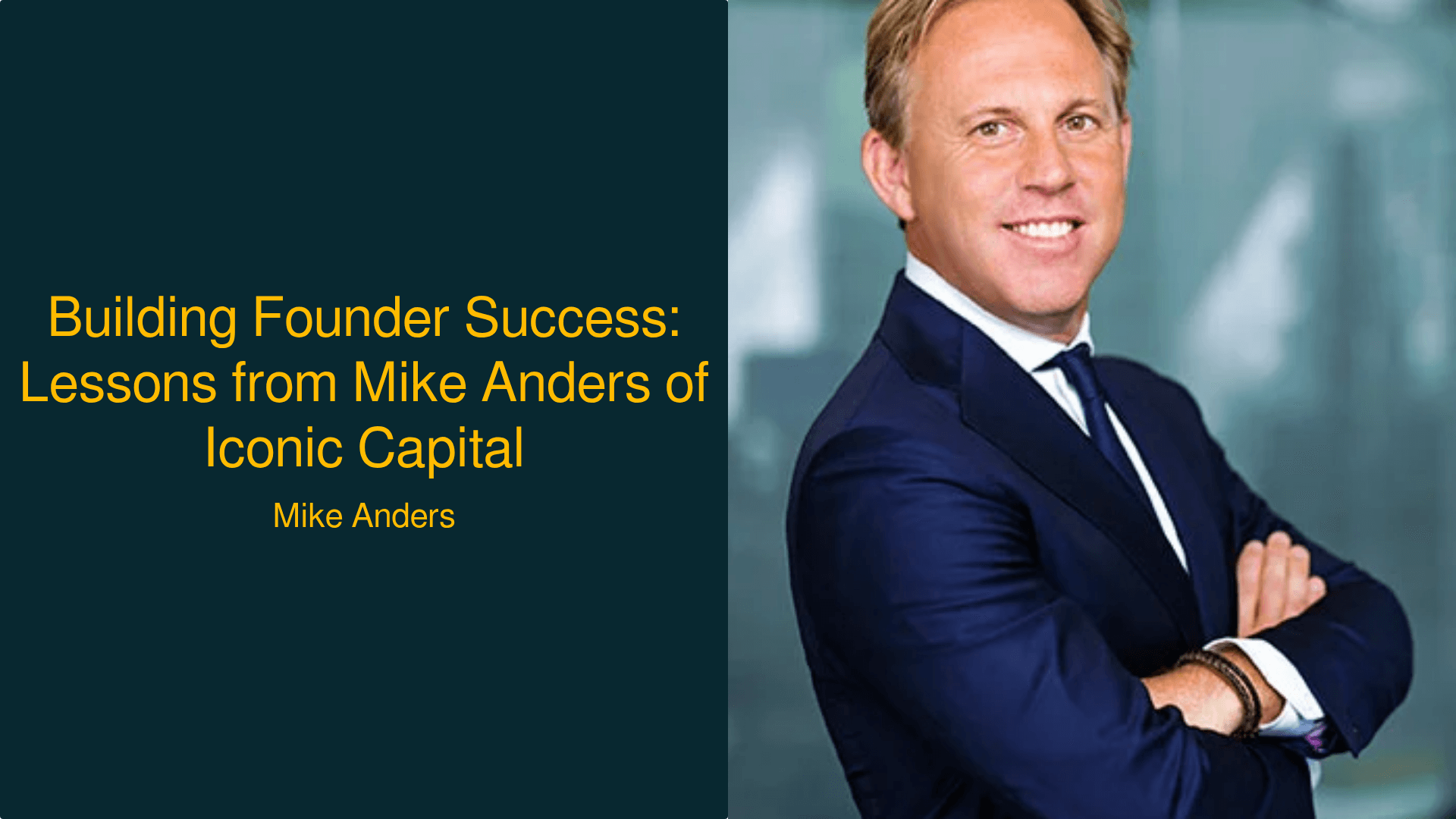Founder Success: Ben Chestnut's Journey with Mailchimp
Discover the actionable strategies behind Ben Chestnut's founder success story with Mailchimp, a $12 billion company built on creativity and resilience.

Founder Success: Ben Chestnut’s Journey with Mailchimp
In the world of entrepreneurship, few stories are as compelling as that of Ben Chestnut, co-founder of Mailchimp. Founded in 2001, Mailchimp started as a side project to a web design firm and has since transformed into a $12 billion email marketing giant, demonstrating the essence of founder success. Chestnut’s journey is not just about creating a successful business; it offers vital lessons on resilience, creativity, and the importance of understanding your market. In this article, we’ll delve into the key strategies and frameworks that propelled Mailchimp to success, drawing on insights from Ben’s experiences and the challenges faced along the way. From embracing a unique brand identity to focusing on small businesses, Chestnut’s story is a blueprint for aspiring entrepreneurs. Let’s explore the actionable insights that can help you on your path to founder success.
Building a Unique Brand Identity
When in doubt, insert a monkey. — Ben Chestnut
Why it matters: In a crowded market, a distinct brand identity can set a company apart. Mailchimp’s quirky monkey mascot and offbeat marketing strategies resonated with small businesses, allowing the company to carve out a niche that appealed to its target audience. This unique branding approach not only attracted customers but also fostered loyalty, as users felt a connection to the brand’s personality. A study from the Harvard Business Review indicates that brands with strong identities enjoy a 20% increase in customer loyalty, highlighting the impact of Mailchimp’s branding on its growth trajectory.
How to Build Your Unique Brand Identity
- Define Your Brand Values: Identify what your business stands for and what makes it unique.
- Create a Memorable Visual Identity: Develop a logo and design elements that reflect your brand’s personality.
- Develop a Consistent Voice: Craft messaging that aligns with your brand values and speaks to your target audience.
- Engage with Your Audience: Use social media and other platforms to connect with your customers and build a community around your brand.
- Iterate and Evolve: Be open to feedback and willing to adjust your branding strategy as your business grows.
Embracing the Power of Freemium
We have permission from our customers to expand beyond just email. — Ben Chestnut
Why it matters: The freemium model proved to be a game-changer for Mailchimp, allowing the company to attract a vast user base without immediate monetary commitment from customers. This strategy not only increased brand awareness but also converted free users into paying customers over time. According to a report by McKinsey, companies that adopted freemium models saw a 20% increase in conversion rates, demonstrating the effectiveness of this approach in driving revenue growth.
How to Implement a Successful Freemium Model
- Identify Core Features: Determine the essential features that will be available for free and those that will require payment.
- Create an Onboarding Experience: Develop a user-friendly onboarding process to help new users understand the value of your product.
- Monitor User Engagement: Use analytics to track user behavior and identify opportunities for upselling premium features.
- Provide Exceptional Customer Support: Ensure that free users receive quality support, which can enhance their experience and drive conversions.
- Communicate Value Clearly: Regularly communicate the benefits of upgrading to premium features to encourage conversions.
Prioritizing Customer Relationships
We only made money when our customers actually succeeded. — Ben Chestnut
Why it matters: Mailchimp’s commitment to understanding and supporting small businesses played a crucial role in its growth. By focusing on the needs of its customers, Mailchimp could tailor its services and resources to provide real value. Research from HubSpot indicates that companies prioritizing customer relationships see a 60% increase in revenue, underscoring the importance of building strong connections with clients.
How to Foster Strong Customer Relationships
- Understand Your Customers: Conduct surveys and gather feedback to learn about your customers’ needs and pain points.
- Personalize Communication: Use customer data to tailor your messaging and offers to individual preferences.
- Provide Educational Resources: Offer webinars, articles, and tutorials to help customers get the most out of your product.
- Be Responsive: Ensure timely and helpful responses to customer inquiries to build trust and loyalty.
- Celebrate Customer Success: Recognize and share customer achievements to foster a sense of community and belonging.
Adapting to Market Changes
We were all just winging it. — Ben Chestnut
Why it matters: Mailchimp’s ability to adapt to market trends and customer feedback was instrumental in its success. By embracing a flexible mindset and being open to change, the company could pivot its strategies effectively. A study by Deloitte found that organizations that adapt quickly to changing market conditions are 1.5 times more likely to achieve revenue growth, highlighting the importance of agility in business.
How to Foster Adaptability in Your Business
- Encourage a Growth Mindset: Foster an environment where employees feel comfortable experimenting and learning from mistakes.
- Stay Informed: Regularly monitor industry trends and competitor movements to anticipate changes.
- Solicit Feedback: Actively seek input from customers and employees to identify areas for improvement.
- Implement Agile Practices: Use agile methodologies to enable quick responses to changing circumstances.
- Evaluate and Iterate: Continuously assess the effectiveness of your strategies and make adjustments as needed.
The Importance of Leadership Development
I think you could use some leadership training. — Kate Lee
How to Develop Strong Leadership Skills
- Identify Leadership Gaps: Assess the current leadership capabilities within your organization and identify areas for improvement.
- Create a Leadership Development Program: Design a program that offers training, mentorship, and resources for aspiring leaders.
- Encourage Peer Learning: Foster a culture of learning where leaders can share their experiences and insights with one another.
- Set Clear Expectations: Communicate the qualities and behaviors expected of leaders within your organization.
- Measure Success: Regularly evaluate the effectiveness of your leadership development initiatives and make necessary adjustments.
Conclusion
Ben Chestnut’s journey with Mailchimp is a testament to the power of creativity, resilience, and a deep understanding of customer needs. His story offers invaluable lessons for aspiring entrepreneurs looking to build successful businesses. By focusing on unique branding, embracing the freemium model, prioritizing customer relationships, adapting to market changes, and investing in leadership development, founders can navigate the complexities of entrepreneurship and drive their companies toward success. As you embark on your own entrepreneurial journey, remember that success is not just about financial outcomes; it’s also about the impact you create and the relationships you build along the way. Take inspiration from Ben’s story and apply these actionable insights to your own ventures. Whether you’re just starting or looking to scale, the principles of founder success remain timeless and relevant.


